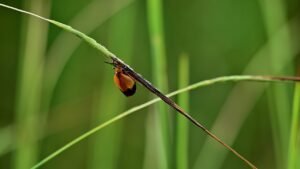Skip to content
Brief overview of the purpose of Sustainable Action Mondays.
Framing the idea: how public awareness, rescue operations, and sanctuary life are changing the lives of animals across the globe.
The importance of sharing both heartwarming and hard-to-swallow stories for real impact.
A. Before Rescue: The Harsh Reality
Description of the fur farm conditions in which Ronja and Tomek lived.
Psychological and physical toll of captivity on wild animals.
B. The Rescue Operation
Role of FOUR PAWS in their liberation.
Behind-the-scenes logistics, challenges, and emotional moments.
C. Aftercare and Rehabilitation
Adjusting to sanctuary life: learning to trust, play, and thrive.
Veterinary and emotional rehabilitation.
D. Current Life and Symbolism
Their story as a symbol of the fur-free movement’s success.
How their journey educates the public on ethical choices.
A. The Dark Side of On-Screen “Cute”
Case study: Katie and Allie, monkeys featured in The Righteous Gemstones .
Overview of how primates are trained and the psychological damage it causes.
B. Behind the Curtain: Industry Practices
Why monkey use persists in media despite growing criticism.
Legal loopholes and lack of enforcement in animal protection laws.
C. The Advocacy Response
Statements from animal welfare organizations.
Push for CGI and humane alternatives in entertainment.
D. How the Public Can Help
Boycotting shows that use live exotic animals.
Signing petitions, supporting ethical media production.
A. Meet the Residents
Introduction to a few notable cats: their names, backstories, and quirks.
B. Enrichment in Action
How sanctuary staff keep lions, tigers, and cougars stimulated during cold months.
Photos or descriptions of snowballs, toys, puzzles, and scents used for fun.
C. The Power of Ethical Tourism
The role of Turpentine Creek in educating visitors.
How visits support rescue and lifelong care.
D. Volunteer and Support Opportunities
How readers can get involved directly or from afar.
A. A Different Kind of Safari
Focus on the tiny heroes of the ecosystem: beetles, butterflies, and other insects.
B. Conservation Through Connection
The role of bug biodiversity in environmental health.
Guided tours that spotlight the small, overlooked species.
C. Visual Spectacle
Vivid descriptions of bug encounters, flora, and colors.
Family-friendly learning meets scientific wonder.
D. Takeaway Lessons
Understanding interconnectedness in conservation.
Appreciating the “small stuff” leads to big change.
A. Weekly Challenges for Sustainable Action Mondays
Example tasks: Watch a documentary, share a rescue story, boycott animal-exploitative content, donate to a rescue organization.
B. Resources and Further Reading
Links to FOUR PAWS, Turpentine Creek, Welgevonden, and advocacy pages.
C. Stay Connected
How to follow and contribute to the series: hashtags, social media accounts, community forums.



